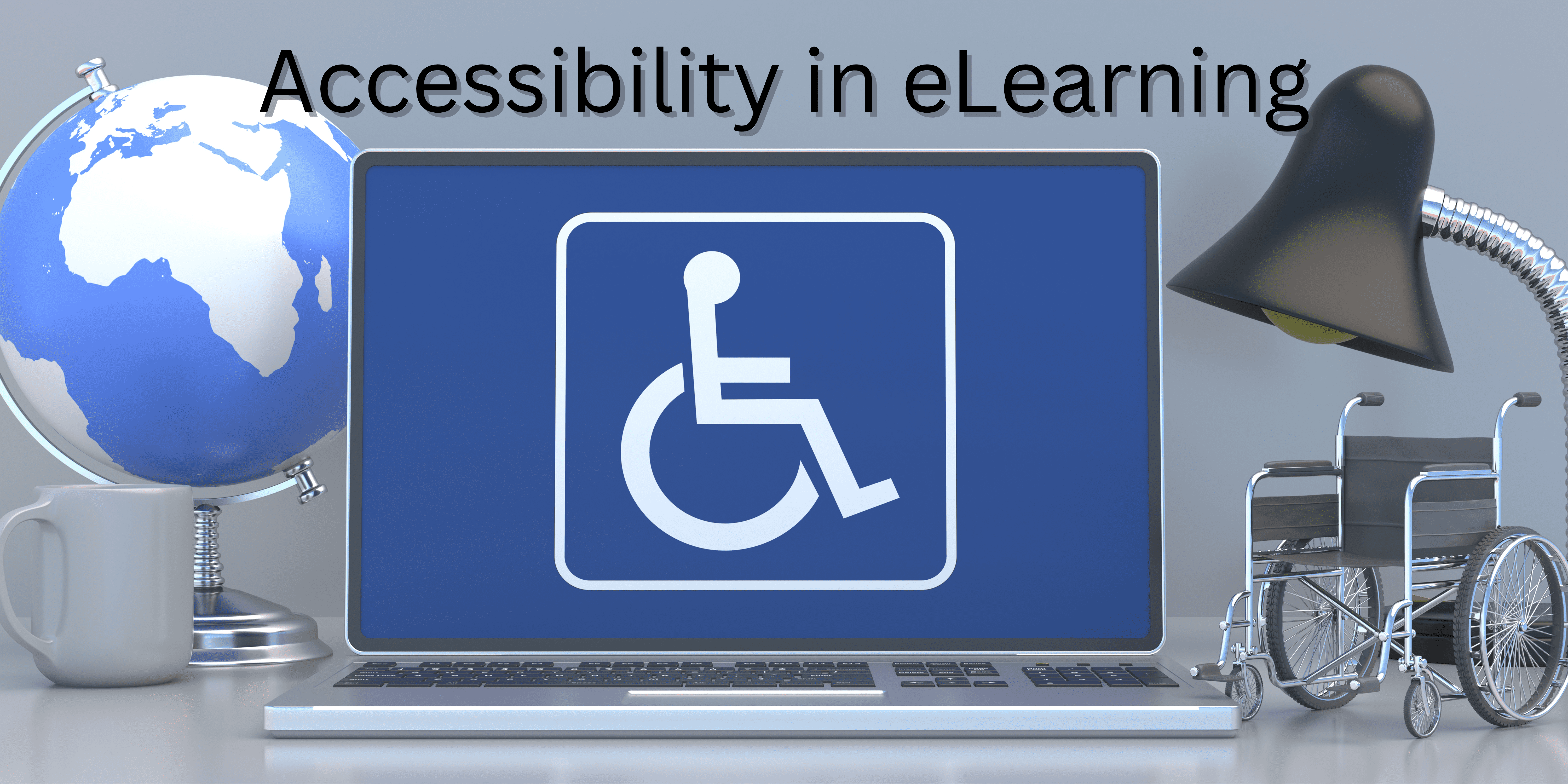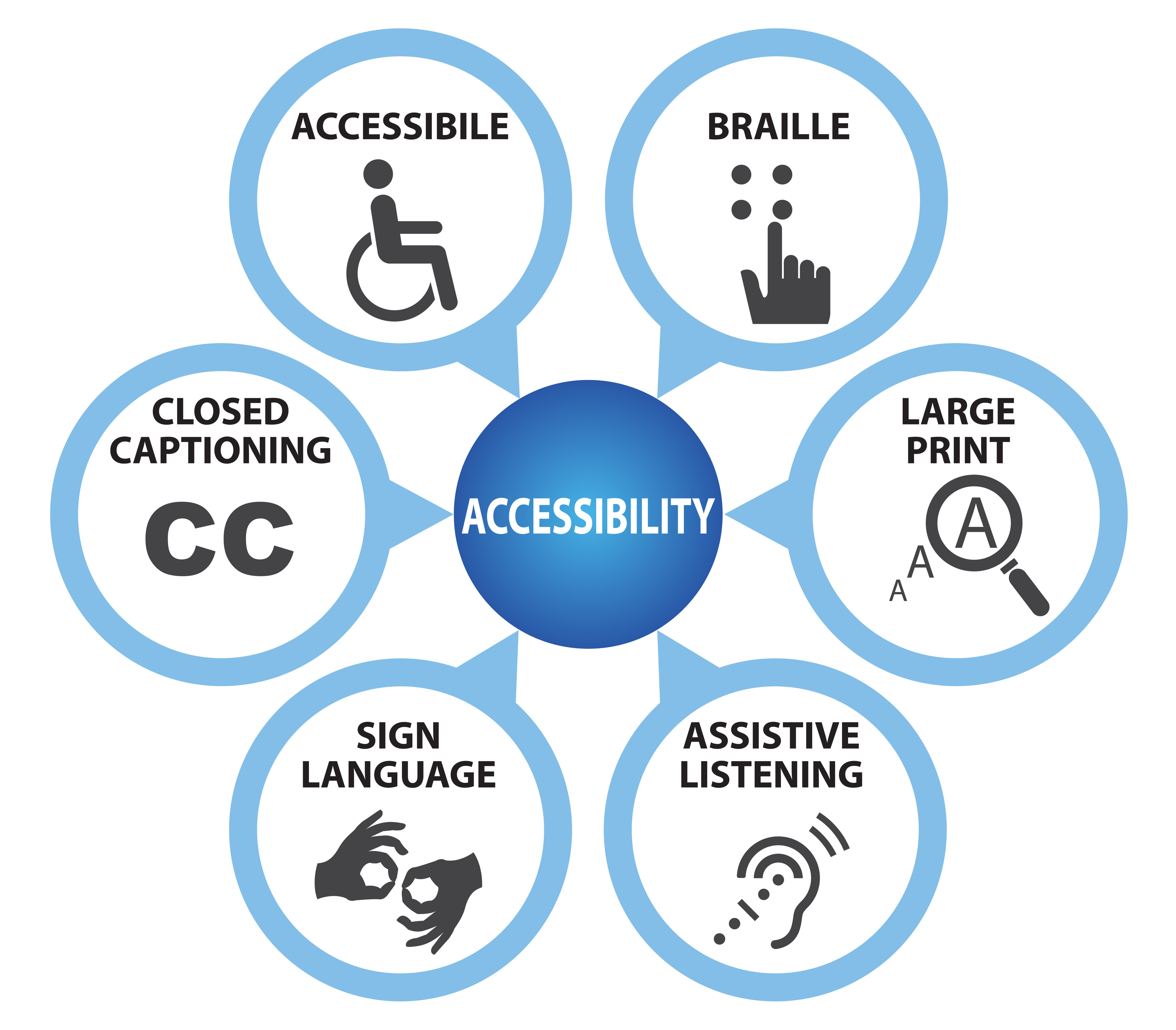
At Harbinger, we help our customers effectively solve their eLearning accessibility challenges. We combine accessibility and UX knowledge to deliver solutions that help organizations meet their specific accessible eLearning requirements. Every project is worked upon by adopting the persona approach where you understand each persona’s need and then propose a solution.
In our previous blog posts, we have discussed at length:
- Best accessibility practices to deliver great learning experiences
- Key reasons why businesses need to implement accessibility
- Design decisions to consider when creating accessible courses
- Tips and guidelines to achieve eLearning accessibility
- Business considerations to implement eLearning accessibilit
In this blog post, we will look at an interesting case study on eLearning accessibility. This case involved the use of a high level of interactivities including simulation-based assessments for learners to successfully complete the courses. It also focused a great deal on how to create innovative and engaging eLearning content that is accessible for all.
Introducing Our Client
The accessibility project was taken up for a prestigious educational institution which is the largest of the 34 colleges of the Washington State Board for Community and Technical Colleges. Providing higher education to 27,000+ students each year, our client is also the largest open-access institution of higher learning in Washington.
The college promotes student success by providing high-quality, flexible, and accessible educational programs and services. It was awarded $11.8 million by the Department of Labor to lead a nine-college consortium for three years of health IT workforce activity and one year of evaluation and reporting. A major initiative was to develop methods to provide faculty and students with exposure to electronic medical record (EMR) systems.
The consortium provides access to actual EMR systems. However, our client wanted to design and implement an initial introductory step for students and faculty enrolled in health programs. They wanted the students and faculty to go through this step before using an actual EMR system. And this is when they approached Harbinger, following which we proposed an impressive solution as discussed below.
What was the Objective?
The objective of the project was to create a fully accessible, engaging, and immersive online learning experience while upskilling learners on the usage of EMR systems. It was also to make learners career-ready for the healthcare industry.
Who was the Target Audience?
The target audience for the special courses designed and developed by Harbinger as part of the project primarily included nursing, medical assisting, health IT, radiation tech, and medical coding/billing students.
What was the Solution?
After a detail study of the learners’ persona, the typical training process, and the new learning goals to achieve, Harbinger proposed building accessible and interactive simulations-based training courses.
Simulations offer many benefits:
- Providing faculty and students with an opportunity to learn about EMR systems without having to manage the technical complexities of working with an actual system
- Providing individual instances for students versus a shared virtual classroom
- Providing instant feedback on the submitted work, which an evidence-based online learning practice
The solution encompassed the design and development of simulations for different EMR software systems. A solid instructional strategy was implemented to make courses accessibility compliant, enable more effective learning, and create great learning experiences.
Three basic types of simulations were created as part of assessments: Show Me, Let Me Try, and Test Me. The solution supported Section 508 compliance on desktops, laptops, and tablets as well as SCORM 1.2 compliance.

What was the Solution Approach?
Let’s deep dive into what made this program special for both our client and the Harbinger team.
Instructional goal and strategy
The instructional goal was to design courses in a way that offers students an opportunity to learn about EMR systems in a self-paced manner without having to manage the technical complexities of working with an actual system. The courses also needed to allow learners to perform hands-on activities to demonstrate their understanding of concepts.
It was an intelligent strategy to adopt a design approach that enables learners to learn, see, practice, and test different features and functions of the EMR systems.
1. Learn: This aspect of the course enabled learners to gain conceptual understanding of the Open EMR system. The conceptual information was presented using a combination of text, animations, images, and audio, and served as a precursor to the simulations.
2. See: This aspect of the course enabled learners to view a demonstration of the tasks and functions that can be performed in the Open EMR system. The demonstration was designed as a self-play animation and simulated the look, feel, and working of the system.
This section had all the basic features of a video that enabled learners to view the demonstration as per their need. These demonstrations were referred to as the ‘Show Me’ simulations.
3. Practice: This aspect of the course enabled learners to apply their understanding of the features and functions of the Open EMR system. The practice activity was designed as a simulated interaction supported by step lists, prompts, and instant remedial feedback.
The practice activities were designed to enable learners to explore the system without any restrictions and risks and learn by practicing. These practice activities were referred to as the ‘Let Me Try’ activities.
4. Test: This aspect of the course enabled learners to assess their conceptual as well as practical understanding of the Open EMR system. The assessment consisted of multiple-choice questions as well as scenario-based and simulation-based questions.
The assessment was scored and not intended to provide any remedial feedback. Upon completion of the assessment, the learners received a final report with diagnostic feedback. This feedback may either indicate successful completion or a recommendation to retake the course. These assessments were referred to as the ‘Test Me’ activities.
Understanding the persona
One of the first steps in creating any eLearning project is to understand the targeted personas. Persona is a profile of a product’s typical customer. It is used to understand key traits, behaviors, goals, responsibilities, and needs of a specific type of user.
Note that there are diverse disabilities and hence diverse accessibility personas a business may need to serve. Understanding this helped us consider how we can cater to all these learners and their accessibility needs.
Taking the template route
The program was vast and meant to be used by various consortium members. It was required to be easily rebranded for each member group and simple to maintain and update for future content changes.
To address this need, the Harbinger team proposed a template approach for the development process. With personas already in place, our team understood the various accessibility obligations. With these insights at hand, we designed templates that conformed to accessibility standards, allowed richer learner experience, and ensured browser compatibility.
Using custom HTML framework was a natural choice to give priority to accessibility and interactivity. It’s constantly a challenge to make an eLearning course accessible when the course demands high interactivity. To add to the challenge, the project had 70+ simulation-based assessments.

The following accessibility checks were taken care of in the project:
Page titles: The page titles were adequately descriptive as user moved from one screen to another. They were also different from other pages.
Image text alternatives: The templates were designed in a manner where it highlighted the need to provide alt text to every image. The Harbinger team made sure we received the correct input from the SMEs to convey the purpose of an image, including pictures, illustrations, charts, and so on.
Text: Appropriate color contrast was used for the text versus the background color. A color palette was provided to the user to change the color contrast of the text against the background color.
Interaction: The courses were highly engaging. We made sure the essence of the courses is not lost by ensuring all the elements are accessible through the keyboard.
General: In general, it was made sure that all the moving, flashing, or blinking content was taken care of. The images or text did not flash for more than three times in a second.
We provided multimedia alternatives like captions, transcripts, and audio descriptions.
Flexible architecture
It was the backbone of the entire program. An important aspect of the program was to build an architecture that allows for changes to be done to the eLearning courses not only by the development team but also by the client’s team.
This was primarily done to address the business scenario or challenge of ensuring the courses don’t become obsolete if the EMR tools undergo enhancements in future. Keeping this in mind, Harbinger not only developed the courses using an architecture but also enabled the client’s team to make changes at their end with the help of detailed documentation and training.
Course structure
The structure for the course followed a three-level hierarchy: Course->Topic->Pages.
A Final Word
The accessible and interactive simulations-based training courses provided opportunities to perform hands-on activities for learners to demonstrate their understanding of concepts. Since these courses were accessible, even learners with disabilities could take them.
The simulations have been successfully piloted by several colleges and have been extremely well-received. It was also requested that these simulations or courses be demonstrated to numerous grant recipients across the country as a positive example of instructional assets.
Through this project, our client has been able to achieve their objective of providing students with hands-on practice or exposure to EMR systems. In terms of cost, our client benefited from Harbinger’s cost-effective and rapid delivery, which helped with the foundation to complete the project at a highly competitive cost. The project also enabled our client to achieve their core objective of learner outreach.
If you’re looking to build accessible eLearning courses or make your existing content accessible, contact our accessibility experts at contact@harbingergroup.com.






